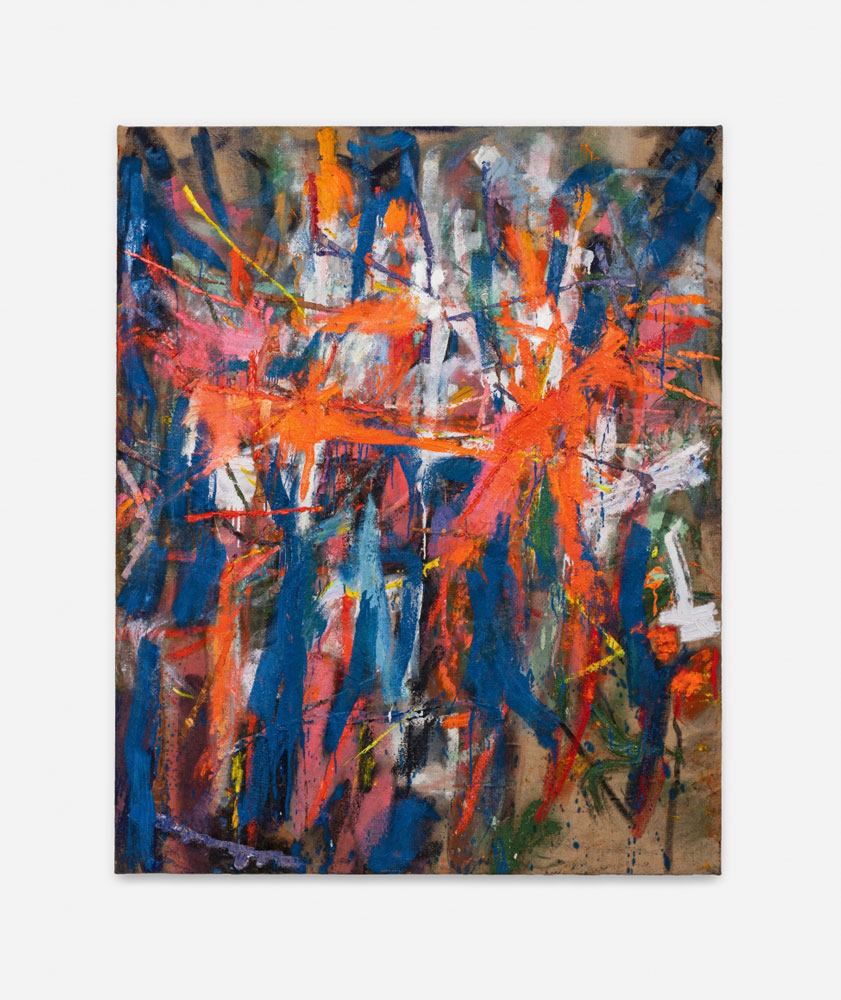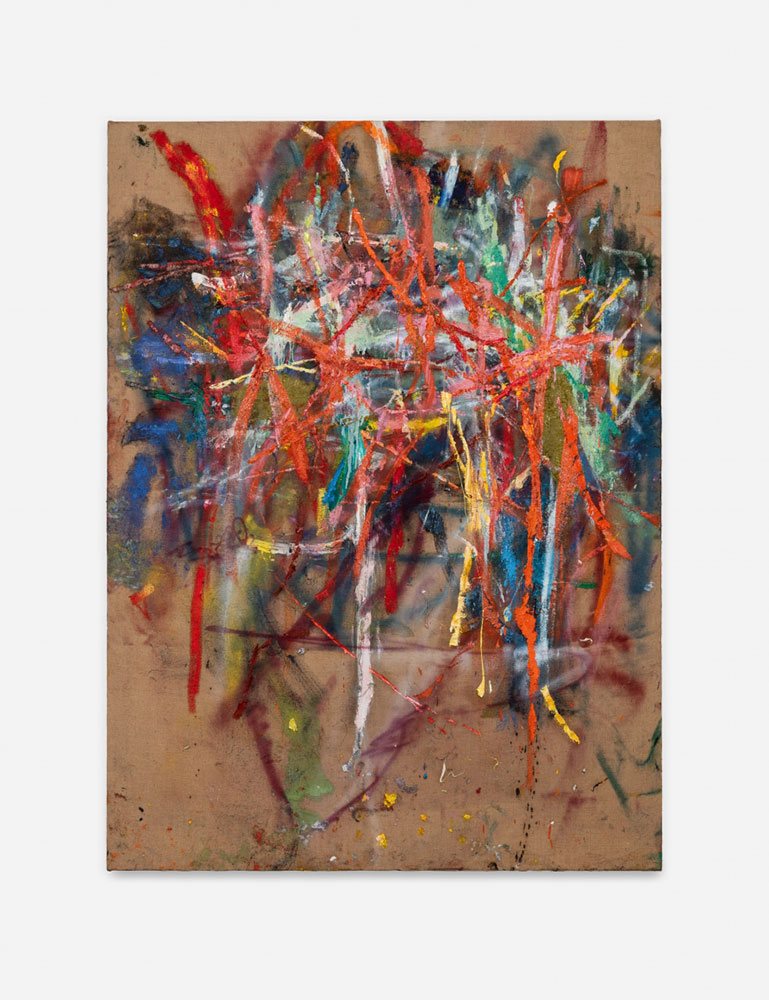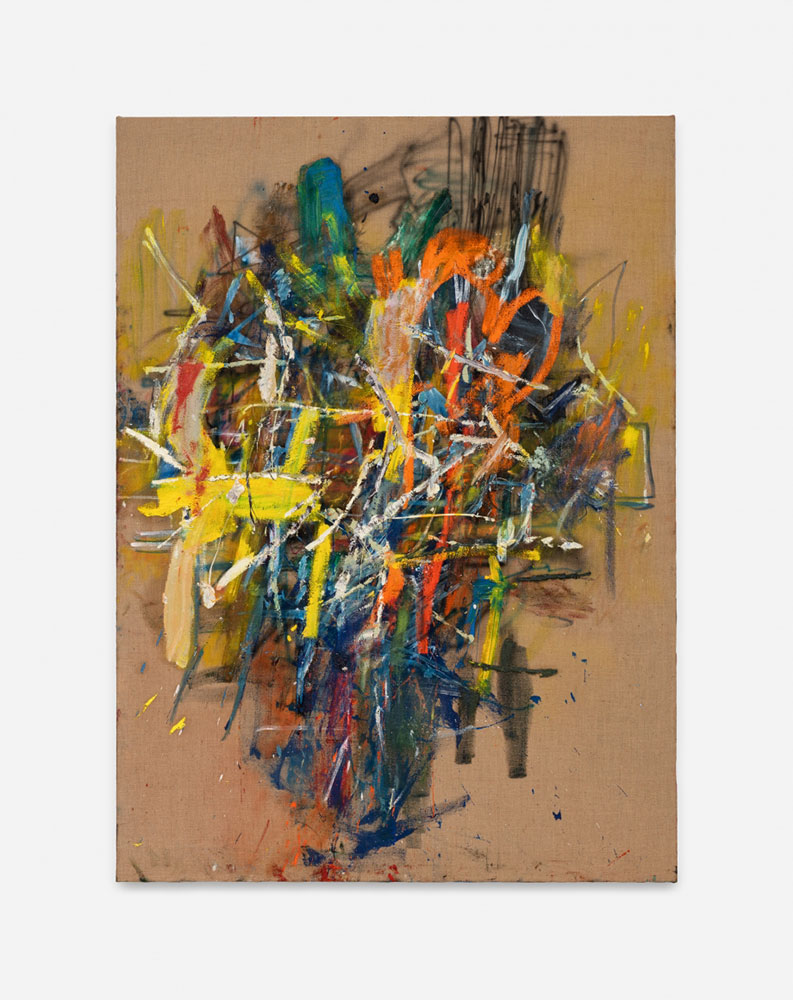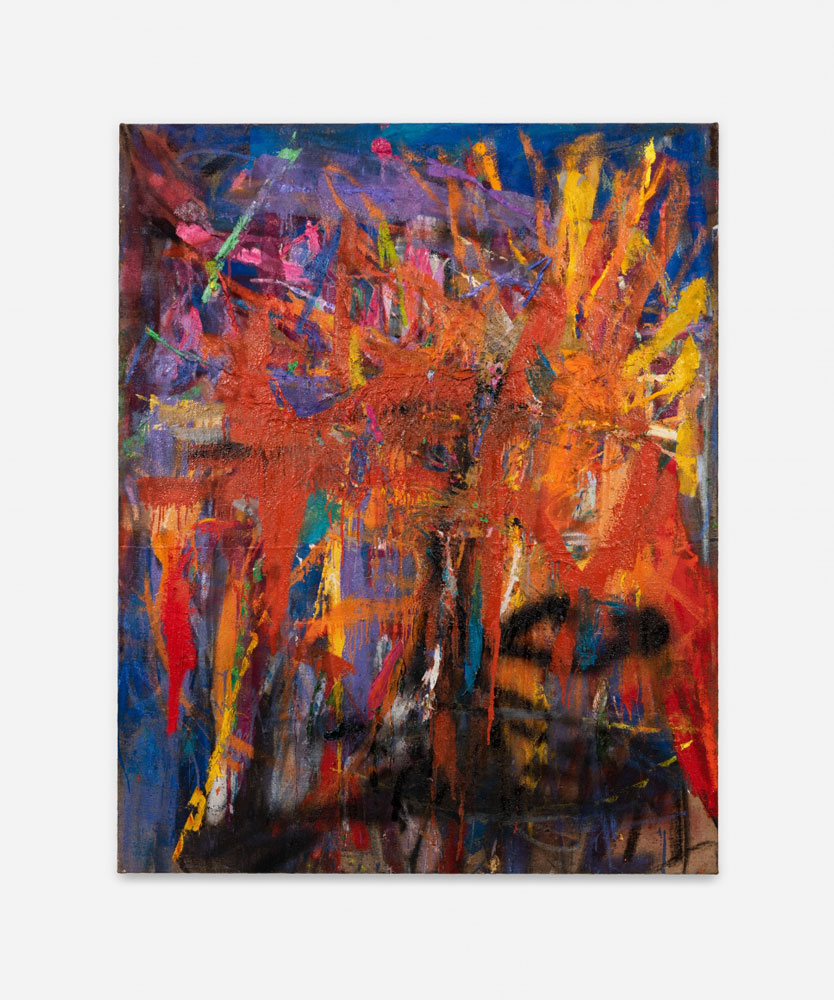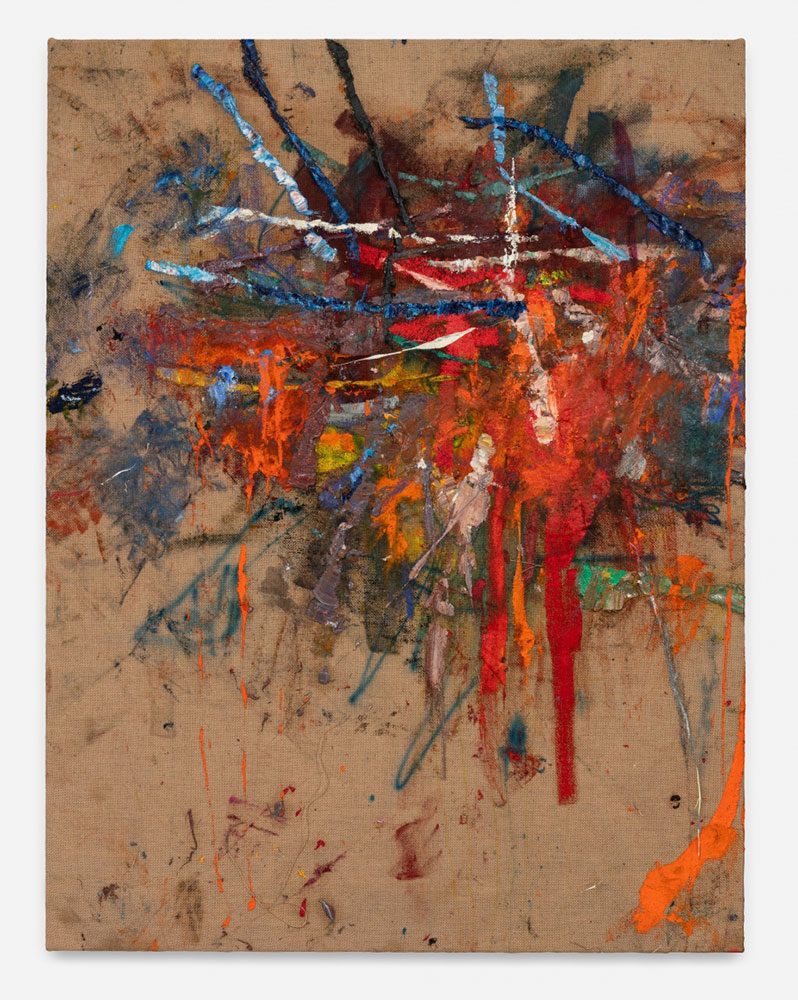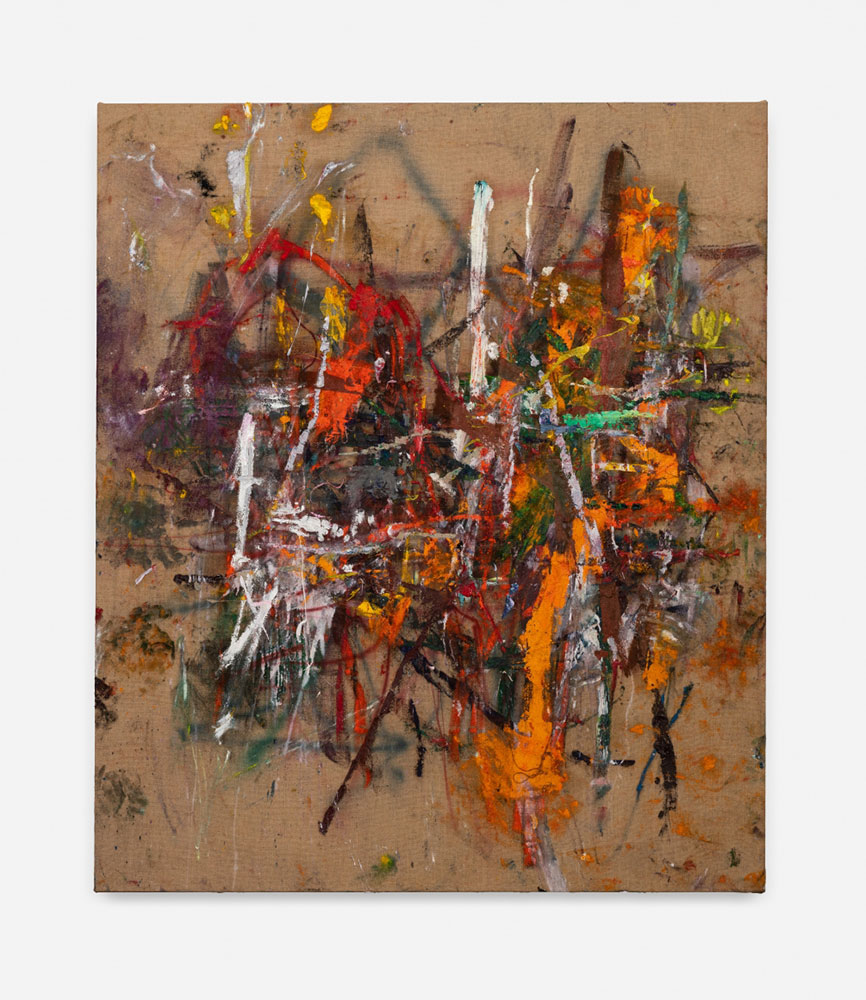ART-PRESENTATION: Spencer Lewis-Susan Mary
 Spencer Lewis is recognized for his works on cardboard and jute, executed in swathes of bright, saturated pigment with a charged physicality expressed in heavily worked and tactile surfaces, streaked lines, smears of paint, and rough, slashed strokes that crisscross back and forth with visceral force. Lewis builds his compositions in layers through unbridled, even violent movements, deliberately subjecting his paintings to fatigue and brute overworking in order to unleash their organic power.
Spencer Lewis is recognized for his works on cardboard and jute, executed in swathes of bright, saturated pigment with a charged physicality expressed in heavily worked and tactile surfaces, streaked lines, smears of paint, and rough, slashed strokes that crisscross back and forth with visceral force. Lewis builds his compositions in layers through unbridled, even violent movements, deliberately subjecting his paintings to fatigue and brute overworking in order to unleash their organic power.
By Dimitris Lempesis
Photo: Vito Schnabel Gallery Archive
In Spencer Lewis’s solo exhibition “Susan Mary” on view are 10 new large-scale paintings on raw jute canvases– loose, vibrant, intuitive abstractions that choreograph pictorial space and manifest the accumulation of Lewis’ process-driven gesture. With its title a dedication to the artist’s late mother, this solo exhibition will be Lewis’ first in Switzerland. The paintings to be presented a exude explosive, maximalist energy. Executed in blazing, combustible color, Lewis’ gestures here are fervent but grounded in formal poetics: his mission is to sustain an exploration of the complex relationships between line, color, and form. The natural hue and coarse, fibrous texture of jute provide an unexpected complement to the artist’s unbounded handling of paint. Ricocheting lines dart across dense fields of impasto with a remarkable velocity, derived from Lewis’ practice of rotating between several canvases at once over a span of days, weeks, and months. Time thus becomes another detectable element in these works, with surfaces that seem to suggest the very moment at which the artist’s ideas have bled through the action. While Lewis’ gestural vigor echoes Abstract Expressionist action painting, the optics of his frenetic palette find resonance in Modernism. In his youth, Lewis discovered his mother’s books on Hans Hofmann and Willem de Kooning, which led him to acquire his own copies so he could draw over reproductions of their work with ballpoint pen, deconstructing their lines and planes of color. Such examinations were essential to his understanding of how to shift, fold, and construct space anew in his own paintings. The new works on view in the exhibition together suggest the lessons learned through such early exercises; tangerine orange strokes set one composition ablaze, conversing with iris, wisps of neon green, azurite blue, and canary yellow pigments. In some paintings, Lewis’ variegated fields stretch to the outer limits of the works’ physical boundaries, with chaos and rhythm of line and color moving up and down, back and forth, from one field to another, in broad horizontal, vertical, and diagonal strokes. In some of the paintings, the artist’s gestures lead a viewer’s eye into intoxicated nests where line and color converge in a swarming space in the middle of the picture plane – a space Lewis often slashes with one final, definitive stroke. The thrashing gestures in Lewis’ mature abstractions have evolved from an X-shape that dominated his early Cage paintings executed on cardboard. Those loosely narrative works evinced the architecture of the body by employing an underlying grid over which the artist applied fields of flat color. Two cleaving lines crossed over the surface of these monumental canvases, rendering a vaguely anthropomorphic presence. An aperture was part of these works, suggesting a peering eye, while other representational fragments of the human face or body emerged and receded between thickets of knots. Lewis is drawn to battered and degraded surfaces and allows chance to influence his artistic lexicon. His surface is not a precious object. His canvases are stacked one on top of another in his Los Angeles studio, where they get kicked, neglected, scuffed, and dragged across the floor. Lewis embraces these haphazard occurrences and concedes his work to the forces of his environment. The casualties that accrue there are part of the energy that incites his painterly practice– an energy that willfully pushes against the precariousness of the orthodoxy of the white cube gallery space and seeks to break open traditional notions of painting.
Photo: Left: Spencer Lewis, Untitled, 2021, Oil, enamel, acrylic and ink on jute, 68 x 61 inches (172.7 x 155 cm), © Spencer Lewis; Photo by Ruben Diaz; Courtesy the artist and Vito Schnabel Gallery. Right: Spencer Lewis, Untitled, 2021, Oil, enamel, acrylic and ink on jute, 84 x 68 inches (213.4 x 172.7 cm), © Spencer Lewis; Photo by Ruben Diaz; Courtesy the artist and Vito Schnabel Gallery
Info: Vito Schnabel Gallery, Via Maistra 37, St. Moritz, Switzerland, Duration: 7/7-26/9/2021, Days & Hours: Tue-Sat 14:00-18:00, www.vitoschnabel.com
